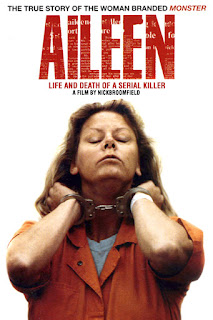"Artistic representation of actuality" BASED On careful research
Close ups are key, repeat the action and beware of CONTINUITY
MAKE SURE - Sequences are INTERESTING - CREATIVE - RELEVANT - PROPERLY SET UP
USE A TRIPOD!
Talk through it all with the people on screen, they may say no but be respectful and think of a way around it.
Make sure everything is planned before you start.
Gaining people's trust is key, make sure you make them feel comfortable
Shoot a wide variety of shots so that when it comes to editing that you have the chance to edit if the main shot doesn't work for some reason. DON'T ZOOM WHILST FILMING. Don't overshoot however as it wastes time.
"Peak moments" The key moments that move the story along - these are best for close ups
Coverage
- The art of getting as many options as possible
- Shoot different angles
- 3 CLOSE UPS FOR EVERY 1 WIDE SHOT
- Getting cutaways to "cover" yourself in your edit incase you need to drops something anywhere in the timeline.
- They must have the same eyelines, it will confuse the viewer if you cut away and back to something different. 180 Rule Key and if you move the camera and show it to us you can "break" the rule
- If you can control it, it should be perfect, in actuality however it can be slightly forgiven.
Cutting on action, compressing time and gives you the illusion of continuity
Actuality - It "feels" real
Rules:
Let the subject move into and leave the frame
Apply the rules of sequencing
Filming plenty of reaction shots
Cutaways, Establishing shots
GVs
Only shoot what you need
Use sound kit carefully
Buzz track
Briefing the camera op is key so you get the right shot
Interviews want to be real life, engage the viewer as quickly as possible
Nick Broomfield "Aileen - Life and Death of a serial killer"
 Bio
Bio"An English documentary filmmaker. His self-reflexive style has been highly influential, and was adapted by many later filmmakers. In the early 21st century, he began to use non-actors in scripted works, which he calls "Direct Cinema". His output ranges from studies of entertainers to political works such as examinations of South Africa before and after the end of apartheid and the rise of the black-majority government of Nelson Mandela and the African National Congress party.
Broomfield generally works with a minimal crew, recording sound himself and using one or two camera operators. He is often seen in the finished film, usually holding the sound boom and wearing the Nagra tape recorder."
Aileen
"Nick Broomfield's second documentary on Aileen Carol Wuornos, a highway prostitute who was executed in 2002 for killing six men in the state of Florida. This second installment includes the filmmaker's testimony at Wournous's trial."Challenging the death penalty
This was the overarching thing that we are looking at in this documentary
Case Study: Should vulnerable people be put on death row without proper testing.
Are the police bent and are they trying to use her for personal gain.
Discussion:
Hypothesis - Questions poised? How are they tested? What enlightens us?
Character - what do each represent the hypothesis? How do you feel about the central character?
Self Reflexivity - How and why used? What role did Broomfield play in the film and how did this affect storytelling and angle of the film.
Interviews - How do they add to the hypothesis and storytelling? Where conducted and by whom?
Sequences - Filmic devices
Actuality - How the story was told and what held the film together? The timeline
Structure and pace - what did you notice about how the story developed, the structure and pace of the film?
Music, Archive and Stills - Why are they needed and how are they used?



No comments:
Post a Comment